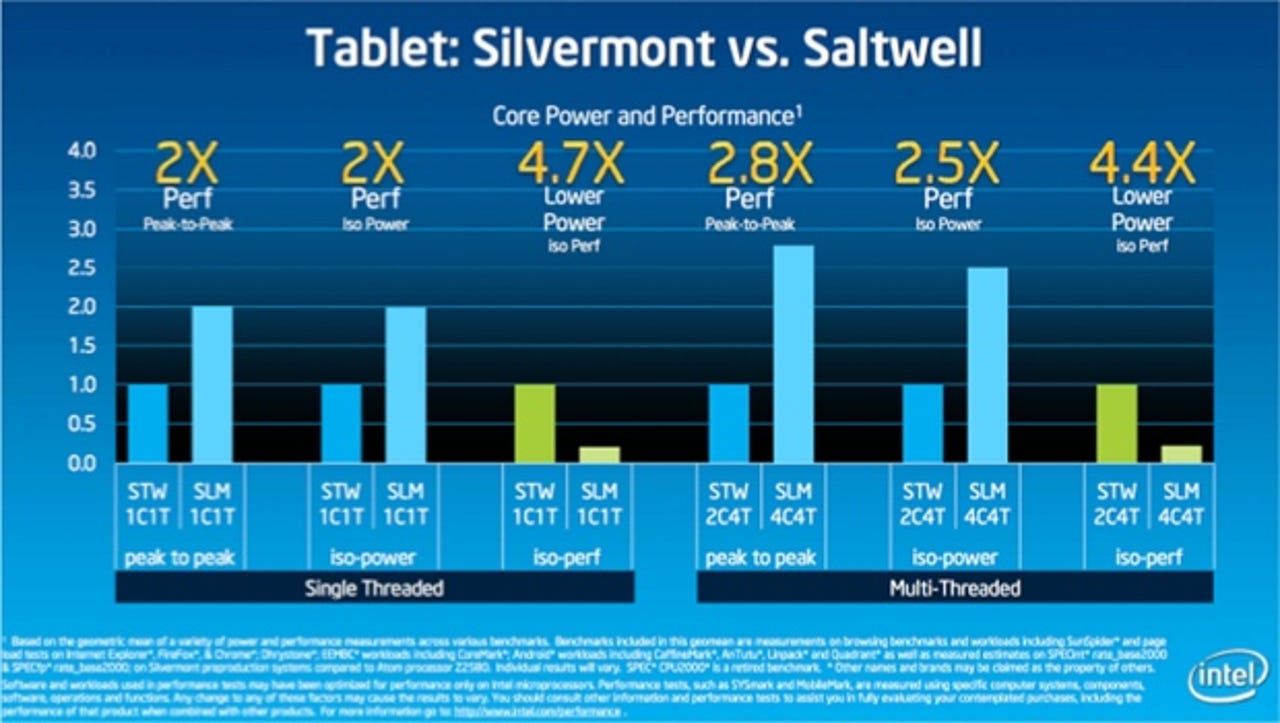Intel finally gets serious about mobile with Silvermont

It may have taken Intel five years to do it, but the company finally has the silicon to prove that it is serious about getting into the mobile space and get disruptive.
Silvermont — which is Intel's first new Atom microarchitecture since Bonnell debuted back in 2008 — is the first chip to come out of Intel that's specifically designed with smartphones and tablets in mind.
As with previous incarnations of Atom, Intel is also keen to plug its potential inside servers, cars, and embedded devices, but at its core, Silvermont is a mobile processor designed to take on the likes of ARM and Apple. The rest is just a distraction.
Silvermont is built using Intel's 22-nanometer tri-gate 3D transistor architecture — which first made an appearance in Ivy Bridge CPUs. It is all about producing as much performance as possible, with as little power consumption as possible. As we transition from the desktop PC to notebooks, smartphones, and mobiles, all of which rely on battery packs, reducing power consumption is vitally important if users are to get a good amount of usage between recharges.
We will have to wait until the end of the year for tablets powered by Silvermont to appear — and until early next year before we see Silvermont-powered smartphones — but according to figures from Intel, Silvermont is going to offer a 2x increase in single-threaded performance, and a 2.8x increase in multithreaded performance compared to its predecessor, which is codenamed Saltwell and was the architecture used in Medfield and Clover Trail processors.

The data also claims that Silvermont uses 4.7x and 4.4x less power for single and multi-threaded operations respectively, compared to Saltwell. So more performance for far less power consumption.
In lay terms, what this means is that users will get more power without killing their battery.
This is great news for both Intel and those looking for more performance per watt from their devices, but this is only part of the good news. As part of its announcement yesterday, Intel also revealed that Silvermont's reign would be limited to about a year before it too is superseded by the 14-nanometer Airmont architecture, which itself would be replaced in a year.
So Intel is not resting on its laurels. Instead, it is doing with Silvermont what it did with Conroe back in 2006 and using Silvermont as a platform to build upon over the years. And given what Conroe gave us — from Penryn all the way to the upcoming Haswell — I think that we can expect good things from Atom over the coming years as Intel tick-tocks out betterments to the platform.
Silvermont is exciting not because of what Silvermont itself brings to the table, but what it is going to mean for the mobile space over the coming years. It virtually guarantees vast improvements over the coming years, so that people buying an Intel-powered tablet at the end of this year will be able to upgrade to a substantially better one in a couple of years.
This is what I think is really exciting about the Silvermont announcement.
It also means that ARM — which all of a sudden is feeling the heat from Intel — and Apple are going to need to get their ducks in a row when it comes to mobile silicon. Intel has proven that given the right starting architecture, it can leverage that tick-tock strategy, and put serious and unyielding pressure on the competition.
The other players in the mobile silicon market need to start worrying.